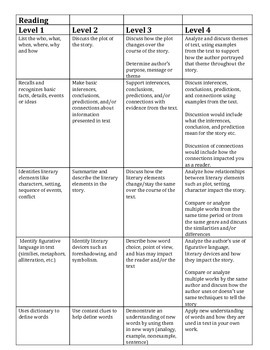

Expect students to think cognitively - to critique, revise, memorize, and compare throughout their learning. As you teach the lesson, use relevant words from the DoK chart.By adding the question ‘ Why‘, you challenge students to think, analyze, and draw conclusions. Reading questions like who, what, when, where easily fall into Level 1.Even in Level one activities (such as math facts), expect students to demonstrate their understanding of the process and to transfer that to new circumstances.Are you introducing concepts or asking students to build on prior knowledge? If students are identifying places on a map (a Level One activity), is that sufficient? Or should you extend their thinking to relate the latitude to other locations and habitats around the world? Definitely, notice which standards your lessons meet, be it CCSS, IB, or your state standards, but also evaluate where it falls in the four levels of Depth of Knowledge.With that in mind, here are seven steps to transform your current lesson plan into one aligned with DoK guidelines:
#WEBBS DEPTH OF KNOWLEDGE CHART BLANK HOW TO#
Show students how to accomplish Level One and Two goals first. To work at a Level Three or Four requires foundation.Rather, it itemizes ways students interact with knowledge. That’s not true in Levels Three and Four.There, it’s about higher-order thinking. For DoK’s Level One and Two, there are usually right answers.That happens in Level Four’s application to the real world. They may memorize a calculus formula (which I’ll stipulate is beyond difficult), but it doesn’t represent rigorous thinking.

Level One may be difficult for some students, but it isn’t complex. Karin Hess says, DoK is not about difficulty, it’s about complexity. Use other sources to analyze and draw conclusions. Tasks that require Level Four thinking include words like connect, analyze, and prove.


I recently got a question from a reader asking how the lessons in my K-8 curriculum supported Dr. Websites–for teachers to build websites.


 0 kommentar(er)
0 kommentar(er)
